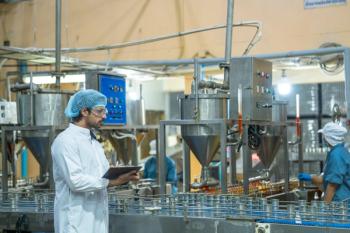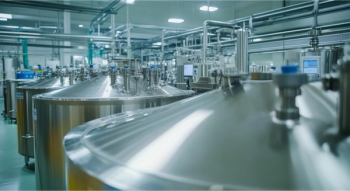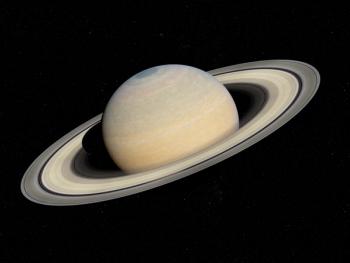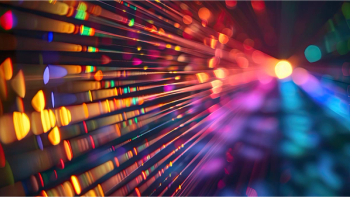
Smarter Sensors, Cleaner Earth Using AI and IoT for Pollution Monitoring
A global research team has detailed how smart sensors, artificial intelligence (AI), machine learning, and Internet of Things (IoT) technologies are transforming the detection and management of environmental pollutants. Their comprehensive review highlights how spectroscopy and sensor networks are now key tools in real-time pollution tracking.
Pollution is one of the greatest environmental threats of our time, but a wave of smart technologies is changing how we monitor and manage it. In a review paper published in Frontiers in Environmental Science, an international team of researchers has outlined how sensors, artificial intelligence (AI), machine learning (ML), and Internet of Things (IoT) devices are being used for environmental pollution monitoring. These technologies, combined with advances in spectroscopy, are helping scientists and policymakers detect hazardous substances with greater speed and accuracy than ever before (1,2).
The research team includes Simona Mariana Popescu (University of Craiova, Romania), Sheikh Mansoor, Owais Ali Wani, Owais Shamal, Shasang Kumar, Vikas Sharma, Arpita Sharma, Vivak M. Arya (Sher-e-Kashmir University of Agricultural Sciences and Technology, India), M. B. Kirkham (Kansas State University, USA), Deyi Hou (Tsinghua University, China), Nanthi Bolan (University of Western Australia), and Yong Suk Chung (Jeju National University, South Korea). Their review brings together expertise from environmental science, engineering, agriculture, and chemistry to explore the current state and future potential of AI-powered pollution control (1).
How AI and IoT Are Changing Environmental Monitoring
At the heart of this analytical revolution is the use of AI to interpret data collected by sensors embedded in natural environments. These sensors—many of them inexpensive and easy to deploy—can detect air pollutants, soil toxins, and waterborne contaminants in real-time. ML algorithms process the vast streams of data from these devices, enabling not just detection, but also prediction of environmental trends and contamination events (1,2).
One of the most promising applications of this approach is in agriculture. The authors describe how AI-driven sensors are being used to monitor soil and plants for hazardous materials like heavy metals and pesticides (3). These sensors assess pH, temperature, moisture, and chemical properties, while ML algorithms, such as those used in electronic nose (E-nose) technologies, identify toxic compounds by recognizing their unique chemical signatures (1,3).
Spectroscopy at the Core of Detection
Spectroscopy plays a central role in this technological shift. Visible and near-infrared (vis-NIR) reflectance spectroscopy, in particular, offers a fast, low-cost, and environmentally friendly method to estimate by correlation heavy metal concentrations in soil. The authors point to examples like the use of extreme gradient boosting (XGBoost) with vis-NIR data to monitor pollution in mangrove sediments, and the application of PLS–RBFNN models to detect airborne lead’s impact on tea plants (1–3).
Additionally, the review highlights recent advancements using surface-enhanced Raman scattering (SERS) in combination with flexible substrates like paper, polymer nanofibers, and fabrics. These materials can assist in the detection of minute traces of explosives, pesticides, and industrial pollutants, making them highly suitable for field use across a range of sectors—from agriculture to national security (1).
Smart Networks and Sensor Integration
Beyond handheld or lab-based tools, the review paper emphasizes the significance of integrated ground-based sensor networks. These networks, which include technologies like the Met One BAM-1020 and Aeroqual NO2 sensors, provide valuable air quality data, especially when combined with geospatial and satellite information. The research also details how ML models like random forest and support vector machines (SVM) have been used to calibrate these networks for more accurate air pollution forecasting (1).
By blending AI with IoT, researchers are creating systems capable of not just recording pollutant levels but also responding to them in real time—an essential tool for managing industrial emissions, urban air quality, and agricultural runoff.
Challenges and the Road Ahead
While the opportunities are vast, the authors caution that challenges remain. These include issues around data sharing, model interpretability, and the need for multidisciplinary collaboration (1). Still, the promise is clear: combining AI with IoT and spectroscopy can lead to smarter, faster, and more sustainable ways of managing pollution across ecosystems.
This review represents a comprehensive analysis of how digital technologies are reshaping environmental science. With a global team behind it and an eye toward practical applications, it provides both a roadmap and a call to action for researchers, regulators, and technologists alike.
References
(1) Popescu, S. M.; Mansoor, S.; Wani, O. A.; Kumar, S. S.; Sharma, V.; Sharma, A.; Arya, V. M.; Kirkham, M. B.; Hou, D.; Bolan, N.; Chung, Y. S. Artificial Intelligence and IoT Driven Technologies for Environmental Pollution Monitoring and Management. Front. Environ. Sci. 2024, 12, 1336088. DOI:
(2) Workman, J., Jr. Transforming Connectivity with a Comprehensive Review of IoT Sensors. 2025, March 3. Available at:
(3) Workman, J., Jr. Smart Farming Using AI, IoT, and Remote Sensing, March 4, 2025. Available at:
Newsletter
Get essential updates on the latest spectroscopy technologies, regulatory standards, and best practices—subscribe today to Spectroscopy.





